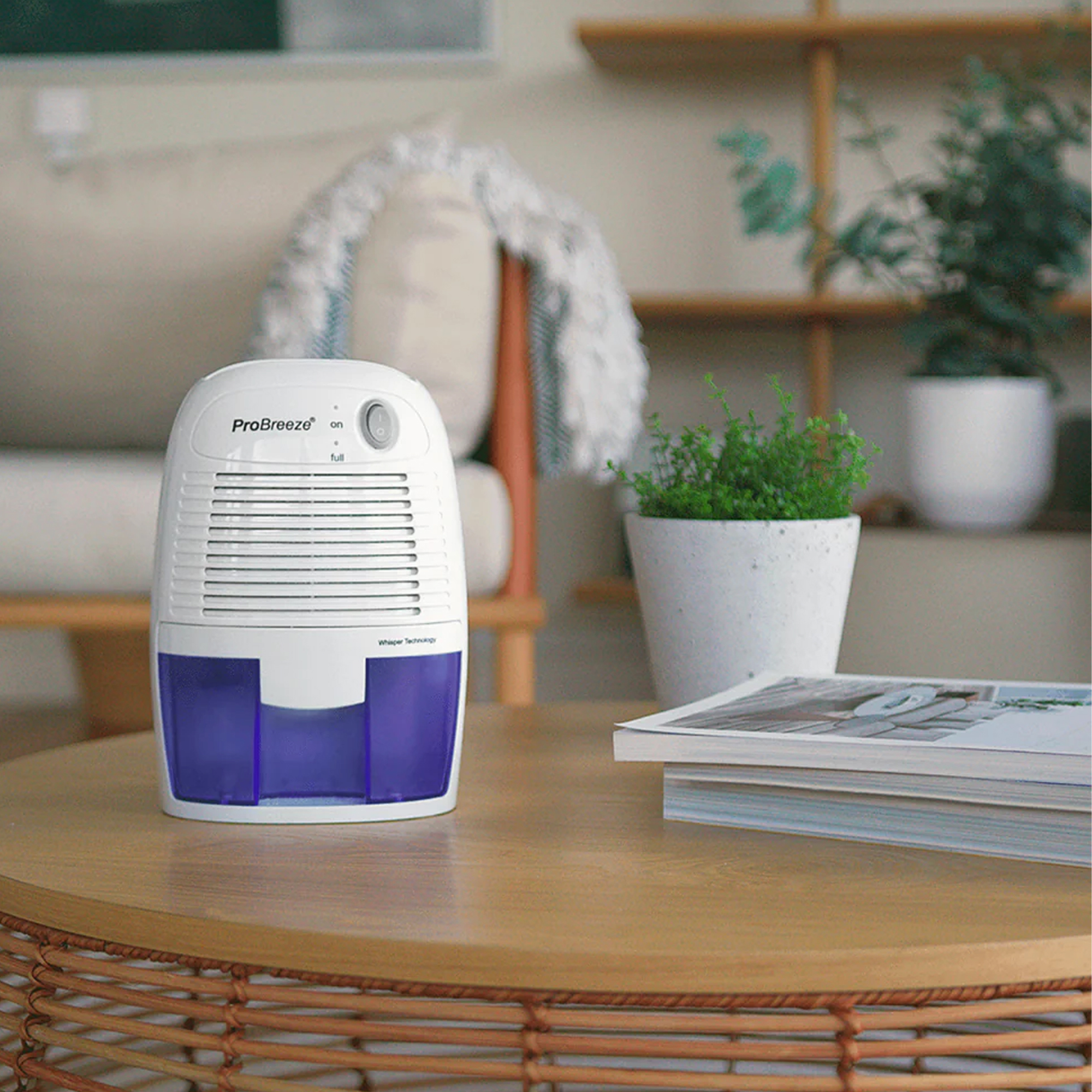
If you've enlisted the help of a dehumidifier to help you manage humidity levels inside your home, then you'll know that although these devices are easy enough to set and forget, they do require a little bit of maintenance to keep them in working order. Namely, emptying the water tank when it's full.
However, sometimes life gets us by and if you're away from home for a couple of days, you might find yourself returning to mould growth in your full dehumidifier tank. After all, even the best dehumidifiers will fail to thrive without the proper care and attention.
First things first, don't panic! While prevention is always the best solution, you can rest assured that it's easy enough to dispose of the water and make your device look as good as new. We asked experts for their best advice on what to do if you encounter a mouldy dehumidifier water tank, and how to prevent future mould growth.
1. Dispose of the water

'Dehumidifiers keep your home cleaner and healthier by removing moisture from the air to prevent mould and dampness from forming on your walls. It's important to regularly clean the tank to ensure that it functions properly,' begins Joshua Warren, AO.com's air treatment expert. 'If you return from holiday to find your dehumidifier's water tank full and mouldy, the first step is safe disposal.'
Wearing gloves to ensure protection against potential contact with mould, carefully pour the water down a drain or toilet. While it's more commonplace now to reuse dehumidifier water for plants, Chris Michael, managing director at Meaco, advises otherwise in this case. 'Since the water might be contaminated with mould spores, it's essential to avoid using this water for any other purpose,' he stresses.
2. Clean the tank

Once you've disposed of the water, the next step is cleaning the tank.
'Thoroughly clean the tank by using a mixture of warm water and mild detergent or white vinegar. After scrubbing, ensure you rinse the tank well and allow it to dry before reattaching it to the dehumidifier,' says Chris. Making sure it's fully dry is important.
Alternatively, Joshua also notes that you can use a mild bleach to clean the tank, if you prefer. This option may be more suitable if you're dealing with persistent mould issues with your dehumidifier.
3. Preventing future mould growth

To prevent future mould growth, if it's feasible, consider utilising your device's continuous drainage option. Many dehumidifiers come with a drain spout where a garden hose can be attached to continually drain water, saving you from having to manually empty it.
'To make the most of this setup, place the dehumidifier on an elevated, stable surface so the hose can easily direct the water down into a drain, sink, or shower tray,' advises Chris. 'This method is particularly useful when the dehumidifier will be left unattended for extended periods, such as on boat or in a garage during cold and damp months.'
If your main priority is using a dehumidifier to dry out damp walls, setting up a continuous drainage system and just letting it do its thing is ideal for the best performance.

If enabling continuous drainage isn't an option, planning ahead is the next best thing you can do. If you know you're going to be gone for a while, Holly Male, brand manager at Duux advises switching off the device if it's going to be left unsupervised for a long period of time.
Alternatively, Holly also suggests setting the target humidity to a higher percentage than you normally would so you can keep your dehumidifier running to prevent damp build-up, without having to worry about it working too hard too fast.
Shop our favourite dehumidifiers
The second generation of the Arete series is quiet, easy to use, works superbly and is extremely energy-efficient, making it the best dehumidifier we've tested. The Arete Two is an impressive step-up from its predecessor, now complete with a timer, Wi-Fi connectivity and Smart capabilities which the Arete One previously lacked.
Although it can't quite beat the MeacoDry Arete series on energy efficiency, and lacks the HEPA air filter, the ElectriQ 12L Dehumidifier is a great budget buy. It's quiet, portable, has a built-in carbon filter to remove both odours and moisture, and its colour-changing indicator light is a handy feature for viewing your home's humidity levels at a glance.
Small, affordable, super quiet, and with running costs of just 1p per hour, this is a budget-friendly option for minor moisture problems. Its Peltier condenser has a much lower extraction rate than most compressor dehumidifiers so it isn't quite as powerful as its competitors, but its compact build is perfect for a small space.
At the end of the day, the only thing that will truly prevent mould from growing in a dehumidifier tank is frequent cleaning and maintenance. 'Regular cleaning of the tank and positioning the dehumidifier in a well-ventilated area also helps,' reiterates Joshua.
However, should you find yourself in the precarious situation of having to deal with a mouldy dehumidifier tank – whether that be right now as you're reading this or later down the line – you can rest assured that you're armed with the right knowledge and steps to take to get your dehumidifier back in tip-top shape and working order.







